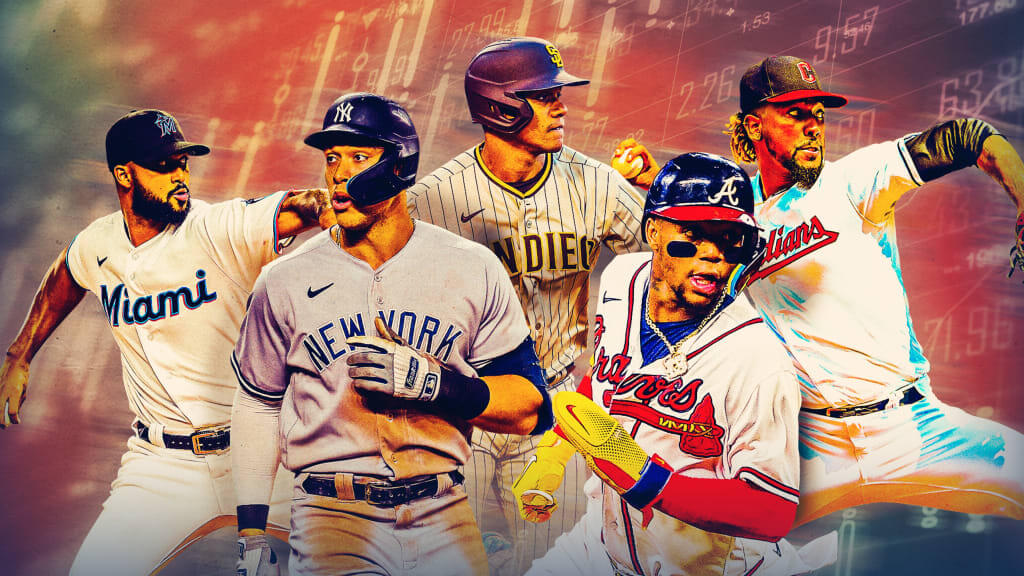Being “outrighted” is an important concept in Major League Baseball (MLB) transactions that refers to when a team removes a player from its 40-man roster by placing them on irrevocable waivers. If the player clears waivers unclaimed by other teams, they are considered “outrighted” off the 40-man roster and can be assigned to the minor leagues. This frees up a 40-man roster spot for the team that outrighted the player.
Outrighting a player removes them from the 40-man roster while allowing the team to retain control over the player in the minor league system. It is an important transaction tool that allows MLB teams flexibility in managing their 40-man rosters and talent pipeline. Understanding what it means to be outrighted in baseball is key for fans, players, and team executives in evaluating roster moves.
Outrighting a Player

Outrighting a player in baseball refers to the process of removing a player from a team’s 40-man roster and assigning them to the minor leagues. This is done by placing the player on outright waivers and having them go unclaimed by other teams.
When a team outrights a player, they are essentially letting go of their rights to that player at the major league level. However, the team still retains control over the player’s minor league rights.
The outrighting process begins when a team designates a player for assignment, removing them from the 40-man roster. The team then places the player on outright waivers, giving other teams the chance to claim the player’s contract. If no team claims the player within a few days, they are said to have “cleared waivers” and can then be outrighted to the minors.
Once outrighted, the player is no longer on the team’s 40-man roster but is still under contractual control by the organization. Essentially, outrighting removes a player from the major league roster while still allowing the team to keep the player’s minor league rights. It’s a way for teams to open up spots on their 40-man roster while not completely losing the player.
Waivers

Any player under contract may be placed on waivers (“waived”) at any time during the regular season. This is done to gauge other teams’ interest in that player. If no team claims the player off waivers within 47 hours, the original team can pull the player back off waivers. If a team does claim the player, the original team can choose to let the claiming team take the player and his contract, work out a trade with the claiming team, or revoke the waiver request and keep the player. This is called the waiver process.
Being placed on and clearing waivers is a key step in the outrighting process. To outright a player off their 40-man roster, teams must first place the player on irrevocable outright waivers. If the player clears waivers, meaning they are not claimed by any other team, then the original team can outright them to the minor leagues and remove them from the 40-man roster. This allows teams to remove players from their MLB roster while still keeping contractual control.
Options
Players on the 40-man roster are given three minor league “option” years (sometimes referred to as options) by Major League Baseball. These options allow a team to freely move the player between the major league club and minor league affiliates within an optional assignment without needing to expose the player to other teams on waivers. A player gets optioned when they are sent down to the minors, and can be recalled back up at any point. Each time the player is optioned to the minors, an option year is used up.
Once a player is out of minor league options, they must clear waivers before being sent down – otherwise any team can claim them. Players who clear waivers can be sent to the minors, but will be designated as Outrighted. So being out of options restricts a team’s flexibility in managing their major league and minor league rosters.
Outrighting Restrictions
There are several restrictions around outrighting players in MLB. The key restrictions relate to options and service time.
Once a player is out of minor league options, he cannot be sent down to the minors without first clearing outright waivers. Being out of options refers to a player being removed from the 40-man roster and exposed to other teams via outright waivers.
Players with 3 or more years of MLB service time cannot be outrighted without their consent. So for players with 3+ years of service time, they must approve being sent through outright waivers before going to the minors.
The service time restriction prevents teams from demoting veterans to the minors against their will. However, players out of options don’t have this protection. If they clear waivers after being DFA’d, they can be outrighted to the minors even if they have 3+ years of service.
Salary and Contracts

When a player is outrighted, the team remains responsible for the full salary obligations owed to the player under his contract, despite removing him from the 40-man roster. The player’s contract remains intact, with all incentives and clauses still applicable unless later renegotiated or bought out.
However, outrighted players do not accrue service time towards free agency while in the minor leagues, effectively delaying their ability to reach free agency and negotiate new contracts. The team retains full control over the player.
Outrighting can be used strategically by teams to remove burdensome contracts from the 40-man roster. For example, the Los Angeles Angels outrighted Justin Upton in 2021, despite owing him $28 million for 2022. This allowed the Angels to clear a roster spot while continuing to pay Upton’s contract.
When claimed, the claiming team takes on the player’s full contract. Waivers can also be strategically used by teams with bad contracts to induce a claim and transfer the financial obligation. However, other teams may be reluctant to claim an expensive contract for an underperforming player.
Overall, outrighting does not allow teams to avoid guaranteed salary obligations, though it does provide flexibility in 40-man roster management. The contract status and financial implications are important considerations when deciding whether to outright a player.
Claiming an Outrighted Player
When a player is placed on outright waivers, the other 29 MLB clubs have the opportunity to claim the player. If multiple teams claim the player, the team with the worst record in the league from the previous season gets priority.
The claiming team assumes responsibility for the remaining salary owed to the player for that season. The player is then added directly to the new team’s 40-man roster.
The entire claiming process is irrevocable – once a team claims a player off outright waivers, they cannot pull back the claim. The player immediately becomes property of the claiming team.
So in summary, the outright waivers process allows teams to claim players placed on outright waivers by other teams. Claim priority is based on the previous season’s standings. Claiming a player means taking on their remaining salary and adding them directly to your 40-man roster.
Notable Examples

In recent years, several notable MLB players have been outrighted off their teams’ 40-man rosters.
Here are a few key examples:
-
In January 2023, the Atlanta Braves outrighted infielder David Fletcher to Triple-A after he struggled offensively in 2022. Fletcher was in his first year with the Braves after being claimed off waivers from the Angels.
-
In November 2022, the Seattle Mariners outrighted first baseman/designated hitter Carlos Santana. Santana was an All-Star in 2019 but hit just .202 in 2022.
-
In October 2022, the Milwaukee Brewers outrighted catcher Pedro Severino after he received an 80-game PED suspension. Severino played 18 games for the Brewers in 2022.
-
In August 2022, the Philadelphia Phillies outrighted veteran infielder Didi Gregorius from their 40-man roster. Gregorius struggled offensively, hitting just .210 in 2022.
Impact on Players
Being outrighted off a 40-man roster can have significant impacts on a player’s career. Once a player is outrighted, they are removed from the 40-man roster and passed through waivers, allowing any other team to claim them 1. If unclaimed, they are sent outright to the minor leagues.
Outrighting a player once in their career does not require their consent. However, being outrighted more than once requires the player’s approval, otherwise they can elect free agency. This gives players some control over their career path after being designated for assignment.
For many players, being outrighted can feel like a demotion and make it harder to get back to the MLB level. However, it also opens up opportunities to be picked up by another organization that may have more room on their 40-man roster. Some players have revived their careers after being outrighted and claimed by a new team.
Getting outrighted can also impact a player’s salary and service time accrual. Once sent outright to the minors, players earn a split MLB/minor league salary and no longer accrue MLB service time. This can delay their path to salary arbitration and free agency eligibility. As a result, being outrighted can significantly reduce a player’s earning potential.
While being outrighted is not the end of a player’s MLB aspirations, it certainly introduces challenges. Their career path becomes less certain, and they lose the stability of a 40-man roster spot. However, staying motivated and continuing to improve their game can help outrighted players work their way back to the majors.
Conclusion
Knowing what it means to be outrighted is an important part of understanding the mechanics and strategies behind how MLB teams manage their rosters. Although it may seem like complex baseball terminology, outrighting a player essentially refers to removing them from a team’s 40-man roster and sending them back to the minor leagues.
The key points to understand about outrighting are:
- It allows teams to open up roster spots on their 40-man while keeping contractual control over a player in the minors
- Players have to first pass through waivers without being claimed before they can be outrighted
- Outrighted players are removed from the 40-man roster but still paid according to their contract
- Teams strategically use options and outrighting to shuffle players between the majors and minors
- Outrighting can be restrictive once a player is out of options and can impact their career
- Knowing the rules around outrighting provides insight into how front offices balance talents between MLB and MiLB
In summary, understanding what it means to outright a player in baseball provides important context around roster management, contractual control, and how team’s balance their short and long-term plans. While complex, gaining a handle on this baseball terminology leads to a more nuanced comprehension of the strategies involved in building an MLB organization.








